Working with Big Data in R
Lifecycle of an Analysis Project
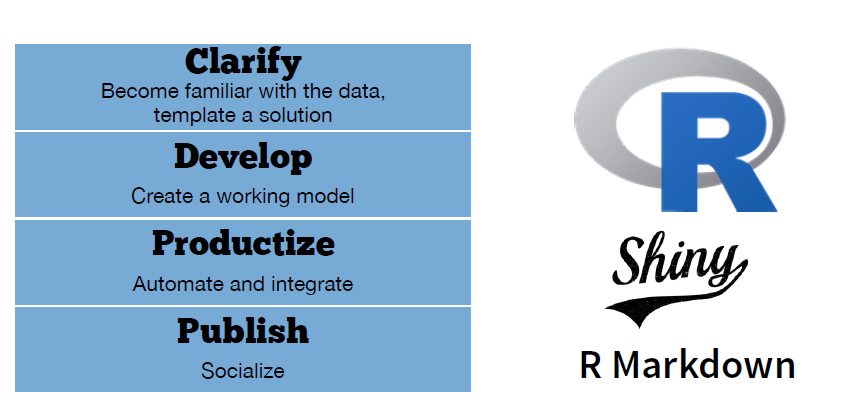
Challenges
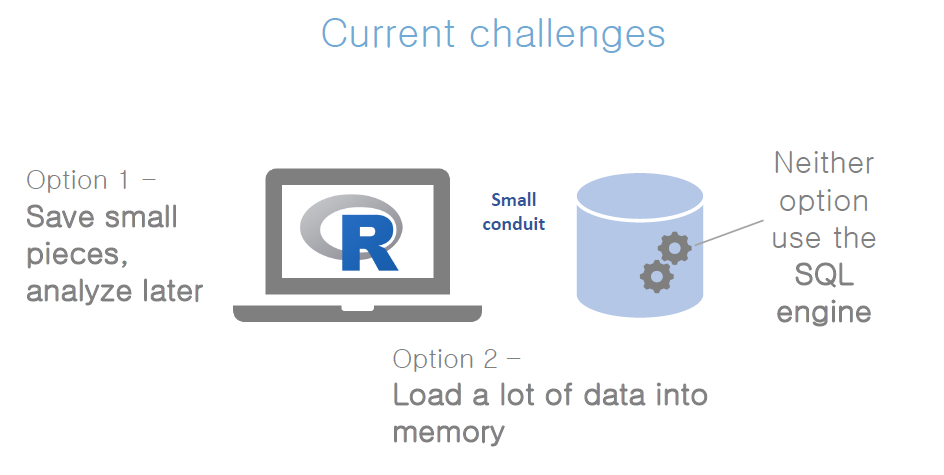
Big Data
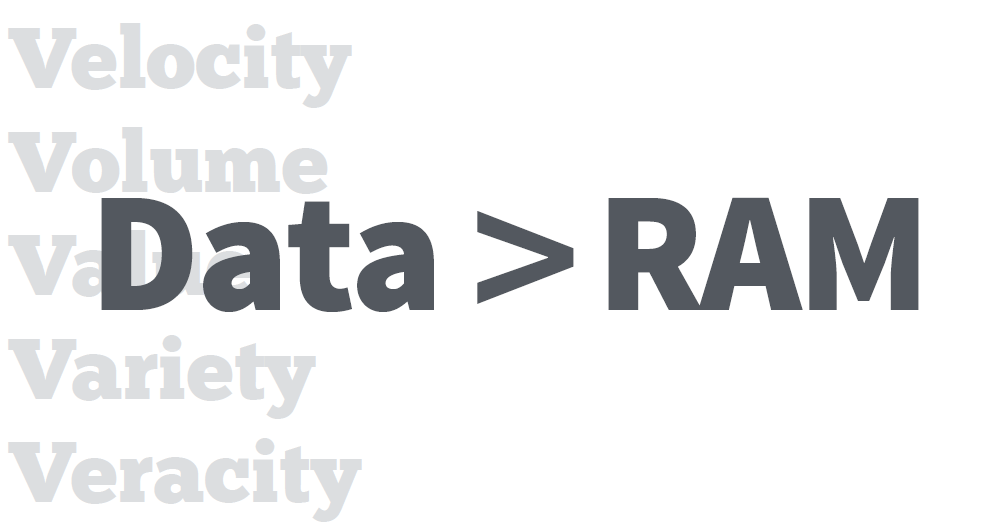
How do Analysts use big data?
Class 1. Extract Data

Class 2. Compute on the parts

Class 3. Compute on the whole

General Strategy
Collect random sample of training data
Fit a model to the sample (in R)
Score against test data (in DB)

dplyr
Package that provides data manipulation syntax for R. Comes with built-in SQL backend:
Connects to DBMS’s
Transforms R code to SQL, sends to DBMS to run in DBMS
Collect results into R
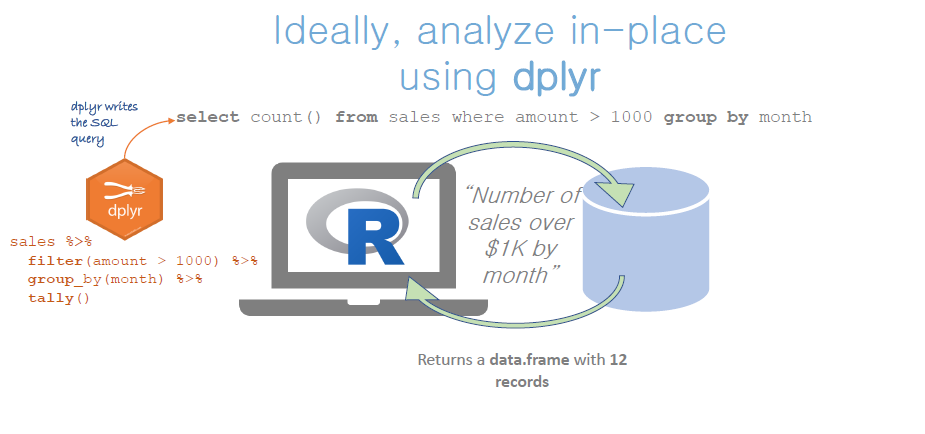
Analytic Environments
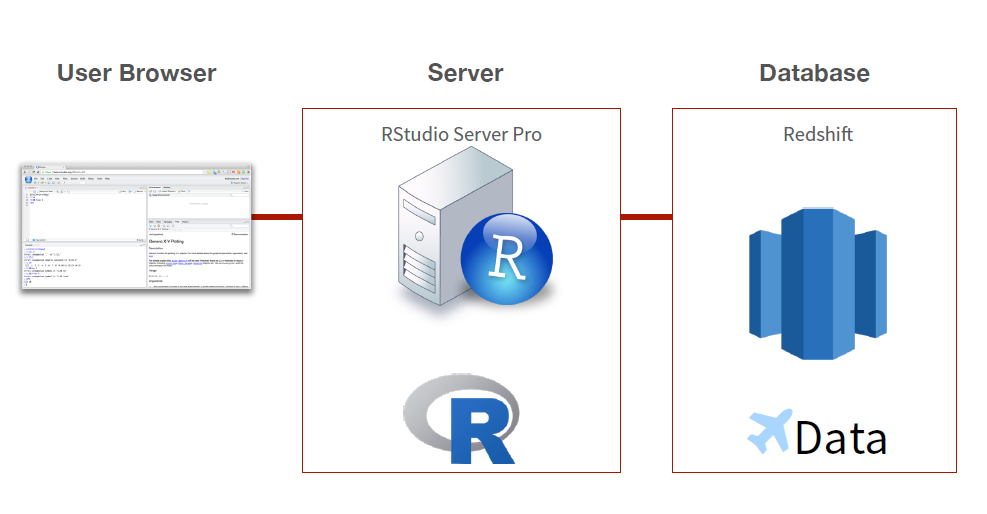
빅데이터 대응전략
분석목적에 맞는 형태의 데이터로 사전에 가공하여 분석마트를 생성
데이터 규모 축소
다수의 작은 데이터를 합쳐서 처리해야할 파일수를 줄이기
비정형데이터를 정형데이터로 변환(XML -> CSV)
2 High Performance 기술 활용
전체 데이터를 독립적인 단위로 나누어 분산처리
병렬처리 기술 활용
database 등 빅데이터 기술 활용
easy way : RSQLite, MonetDB
hard way: 스파크, 하둡 클러스터, GPU 등 빅데이터 기술 활용
결론
다수 기관들의 빅데이터 사업이 실제로는 복잡한 빅데이터 기술을 적용하지 않고 분석 가능한 사례가 많음
개인연구 또는 소규모 프로젝트에는 easy way를 적극 활용할 필수
데이터 유형별 대응전략 권고
| 처리속도 | 메모리 이내(50%, 1~4G) | 10~100 Giga | tera 급 |
|---|---|---|---|
| 배치, 분석 | dplyr | DB(RSQLite) | Sparklyr with Hadoop Cluster |
| near 실시간 | Parallel, DT, feather | Monetdb | Empala 등 … |
본 과정의 분석사례
부동산 실거래 데이터
비정형 -> 정형화
다수의 작은 파일 -> 하나의 파일로 합치기
데이터 구조 변화
parallel computation
Flight 데이터
분석마트 생성
데이터 구조 변화
data.table, feather
RSQLite, MonetDB
한국거래소 상장주식 주가 크롤링